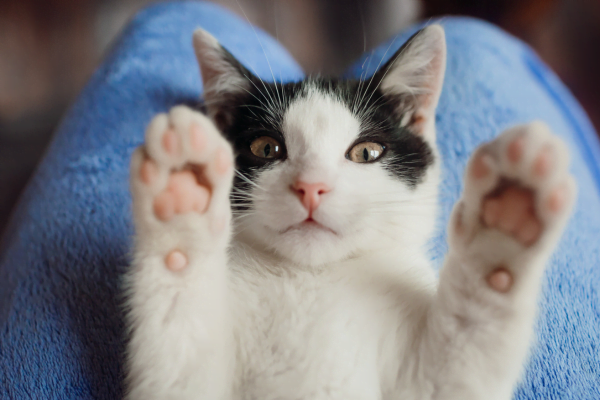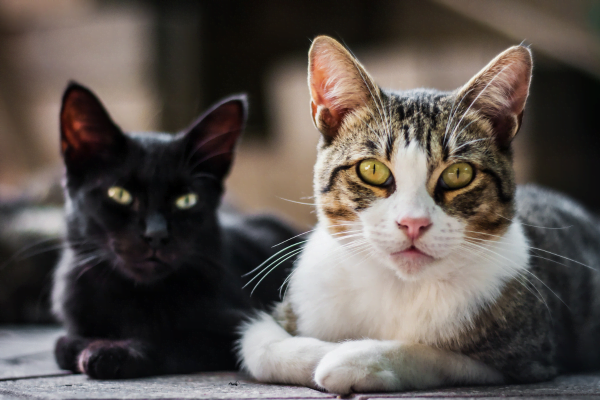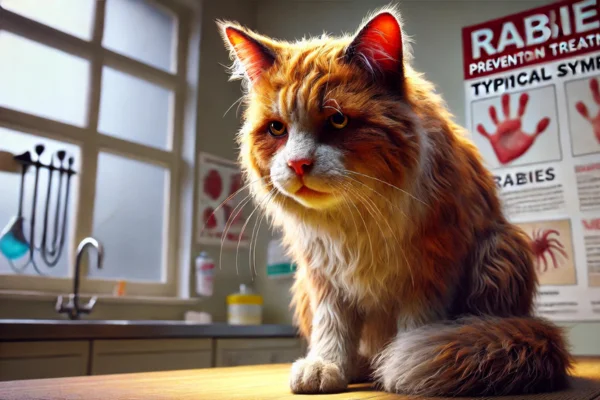Cat with an open wound: how to treat it?
Taking Care of Your Feline Friend
Introduction
Cats are beloved companions, and their health is a top priority for any cat owner. A common concern is how to treat a cat with an open wound, often referred to as "Gato com ferida exposta: como tratar?" in Portuguese. In this article, we'll cover the best practices for treating your feline friend when they have an open wound. We'll cover the essentials, from immediate first aid to long-term care. Your cat's well-being is our focus, and we're here to guide you in the process.
Immediate actions
An open wound on your cat can be distressing. Here's what to do immediately:
- Assess the situation: Examine the wound carefully to assess its severity. Is it a superficial scratch or a deeper laceration?
- Protect yourself: Before handling the wound, put on gloves to avoid infection and avoid bites or scratches.
- Clean the wound: Clean the wound gently with a mild saline solution or clean water.
- Stop the bleeding: Apply gentle pressure with a clean cloth or gauze to control bleeding.
Contents

Seek Professional Help
When to involve a vet
Your cat's health should never be treated lightly. If the wound is deep, large or shows signs of infection, consult your vet immediately. They can provide the necessary medical attention and antibiotics if required.
Home Treatment
How to care for open wounds in cats?
Dealing with open wounds in cats is a delicate process that requires attention and care. It is important to emphasize that it is always essential to seek the advice of a veterinarian before starting any treatment, since administering medication without proper supervision can lead to risks.
First of all, the wound must be thoroughly cleaned. This can be done using antiseptics such as chlorhexidine, 10-volume hydrogen peroxide and saline solution. Cleaning should be carried out gently to avoid causing pain to the animal or aggravating the injury. It is important to remove any impurities or crusts to ensure that the medicine can penetrate the wound.
After cleaning, an ointment with antibiotic properties should be applied to keep the wound moist and free of infectious agents. Depending on the cat's environment, the wound may need to be protected to prevent dirt from getting in or flies from approaching, which can become a serious problem. The administration of painkillers at this stage can provide comfort to the animal.
Dressings should be changed two or three times a day, ensuring that they remain clean and dry. After the first three days, the wound can be kept open, as long as there is no longer any risk of external contamination. At this point, it is important to weigh up the pros and cons of keeping the wound unprotected. Any necrotic tissue should be removed from the wound to allow the edges to heal. The continued use of antibiotic ointments can be considered if they are aiding the healing process.

Why do wounds remain open and don't heal?
Exposed wounds are injuries where the skin has been broken, leaving the site unprotected. In these cases, healing occurs by second intention, i.e. the body contracts the wound, bringing its edges closer together, and the damaged tissue is regenerated or replaced by scar connective tissue.
Some wounds can be treated by removing the damaged edges, cleaning them properly and suturing them to promote faster healing. However, several factors come into play, such as the length of time the tissues have been exposed, bacterial contamination and the ability of the tissue to contract in order to close the wound.
When a wound stubbornly won't heal, it could indicate a number of problems:
- Infection: Contaminated wounds don't heal easily, as the body needs to drain secretions, and bacteria can produce enzymes that hinder tissue regeneration.
- Parasites: The presence of parasites, such as fly larvae (myiasis), can prevent the production of the necessary healing factors.
.
The phases of healing are interlinked processes, and a treatment that speeds up one phase may inhibit another. Therefore, a drug that is effective at the start of treatment may not work as well at a later stage of healing.
In the case of a wound on your cat, it is important to assess whether the use of an Elizabethan collar, commonly called a "cone", is necessary to prevent the cat from licking the wound and contaminating it with oral bacteria. Cats often feel uncomfortable wearing the cone because of its weight and the obstruction of their vision. A lighter alternative is to create a collar with X-ray film, allowing the cat to see around it while protecting the wound. Make sure you sanitize the material thoroughly before using it.

How do wounds heal?
Wound healing is a complex process that takes place in several stages. Here is a simplified explanation of how this process takes place:
- HemostasisThe first stage of healing takes place immediately after the injury. The body tries to stop the bleeding by constricting the blood vessels and forming a blood clot.
- InflammationOver the next few hours and days, the injured area becomes inflamed. This happens due to the release of chemical substances that attract immune system cells to the wound site. These cells help fight infection and remove debris.
- ProliferationIn this phase, cells called fibroblasts begin to produce collagen, an essential protein in the formation of connective tissue. This collagen helps to create a matrix in which the new cells can grow. Blood vessels also proliferate to supply nutrients to the growing cells.
- Maturation and RemodelingOver time, the collagen produced begins to reorganize and remodel itself. This can take weeks or even months. The initial scar is often reddish and may appear irregular, but over time it becomes clearer and less noticeable.
.
It's important to note that the healing process can be affected by various factors, such as age, the person's general health, the location of the wound and the severity of the injury. A scar may never disappear completely, but with proper care, it can become less visible over time. In addition, certain medical treatments, such as sutures, can speed up healing and reduce the formation of visible scars.
Frequently Asked Questions, Cat with an open wound: how to treat it?
How can I prevent my cat from getting hurt in the first place?
Preventive measures include keeping your cat indoors, ensuring that they have a safe environment and regular visits to the vet.
Can I use human wound care products on my cat?
It's best to consult your vet before using any products intended for humans, as cats have unique needs.
Is it necessary to wear an Elizabethan collar?
In most cases, yes. Avoiding excessive licking is crucial for wound healing.
Can I bathe my cat with an open wound?
Avoid bathing unless your vet recommends it. Moisture can delay healing.
What signs indicate infection?
Look for redness, swelling, increased discharge or if your cat seems to be in pain. Contact your vet if you notice these signs.
When can my cat resume normal activities?
Your cat can gradually resume normal activities as the wound heals, but consult your vet for a specific schedule.
Conclusion
Cat with an open wound: how to treat it?
We hope this guide has been useful in ensuring your cat's health in the event of an open wound. Remember that your feline's safety is paramount, and following these guidelines can make all the difference in the recovery process.
If you have any additional questions or concerns, don't hesitate to consult your veterinarian. They are the best source of information and personalized guidance for your specific cat.
Keep your cat healthy, happy and safe. Thank you for trusting us to look after your furry friend!
If you liked our article, please leave a comment.
Thanks for stopping by, check out our other work too
https://vettopbr.com/tosse-em-caes/







